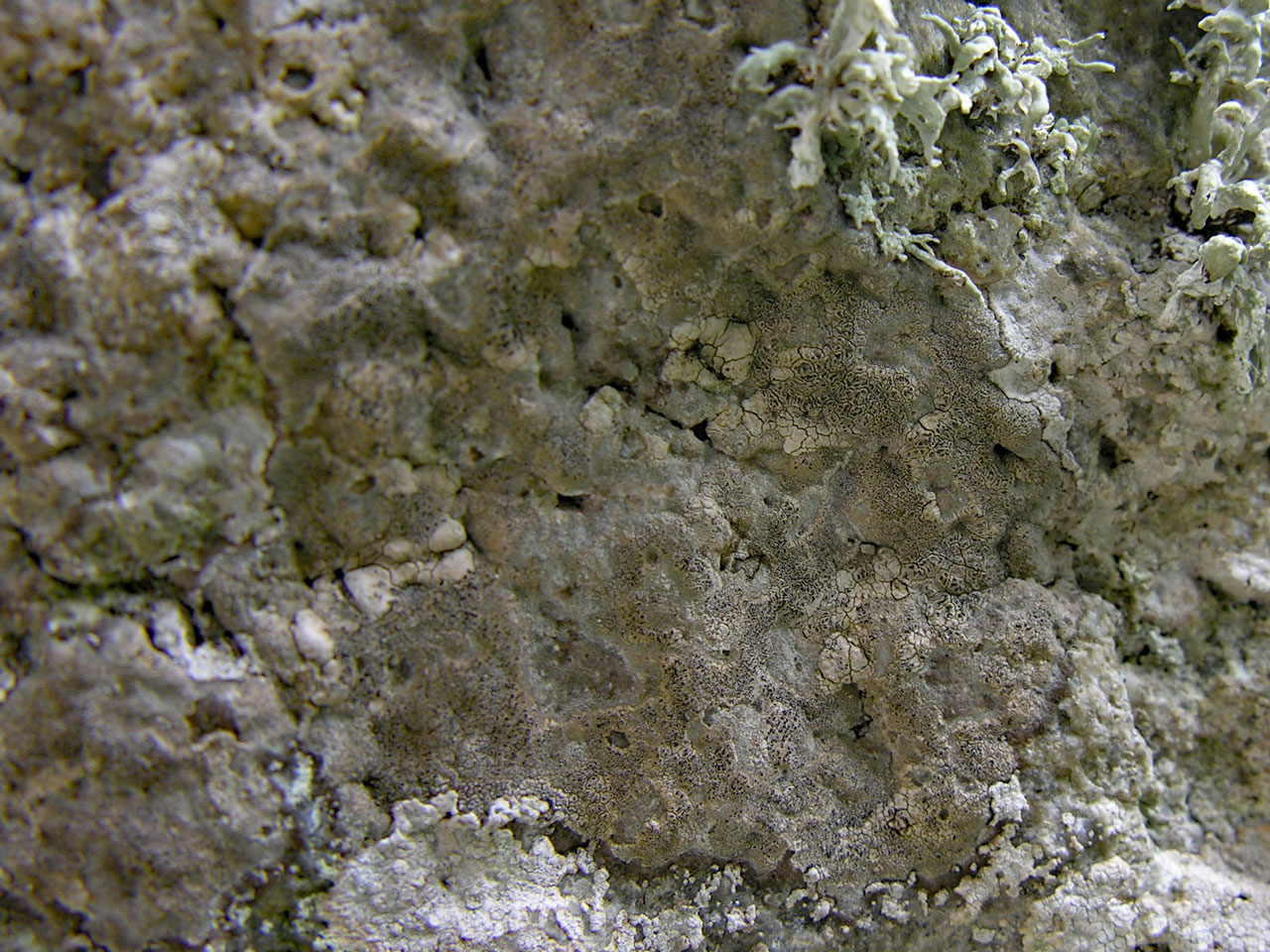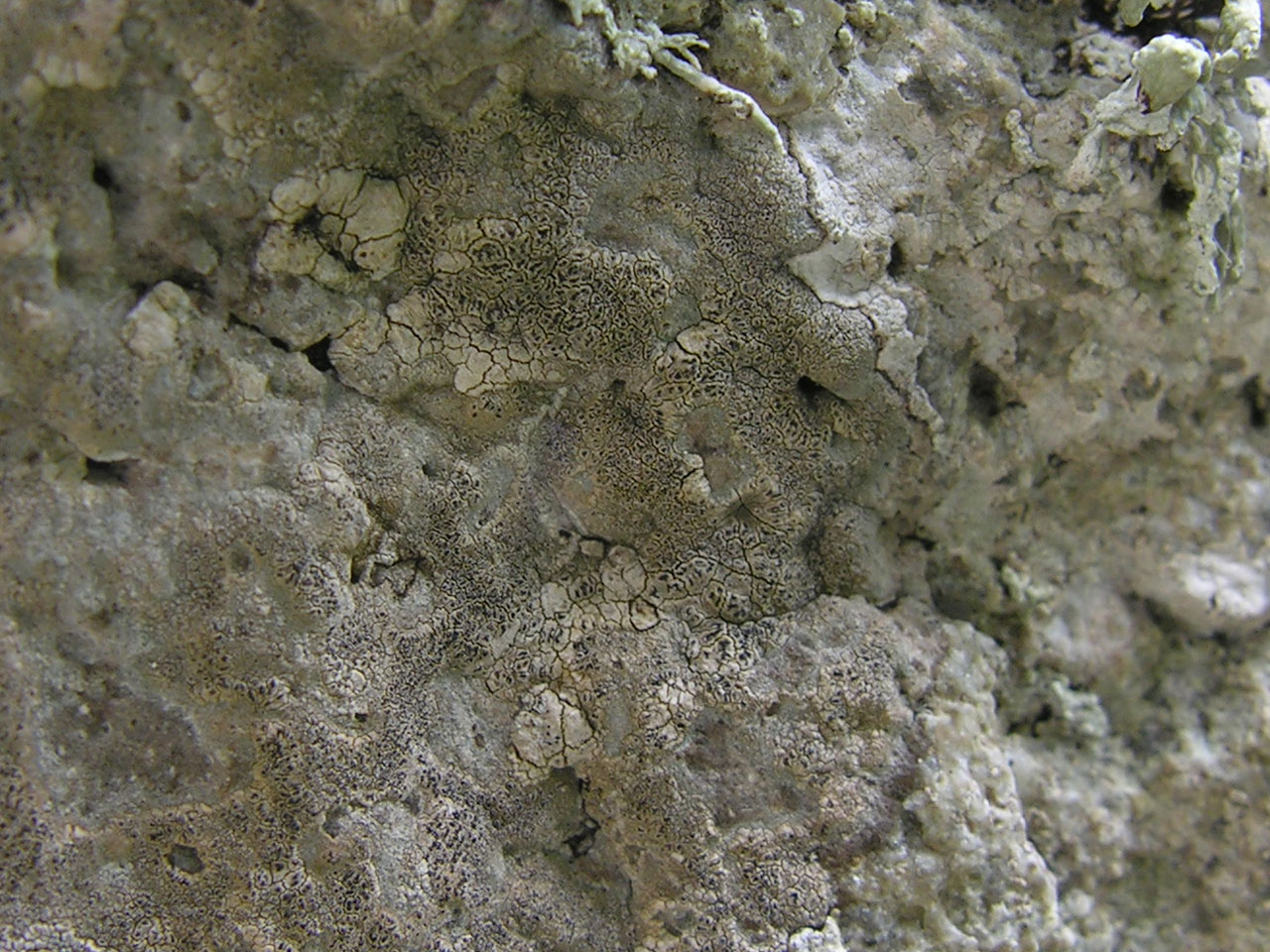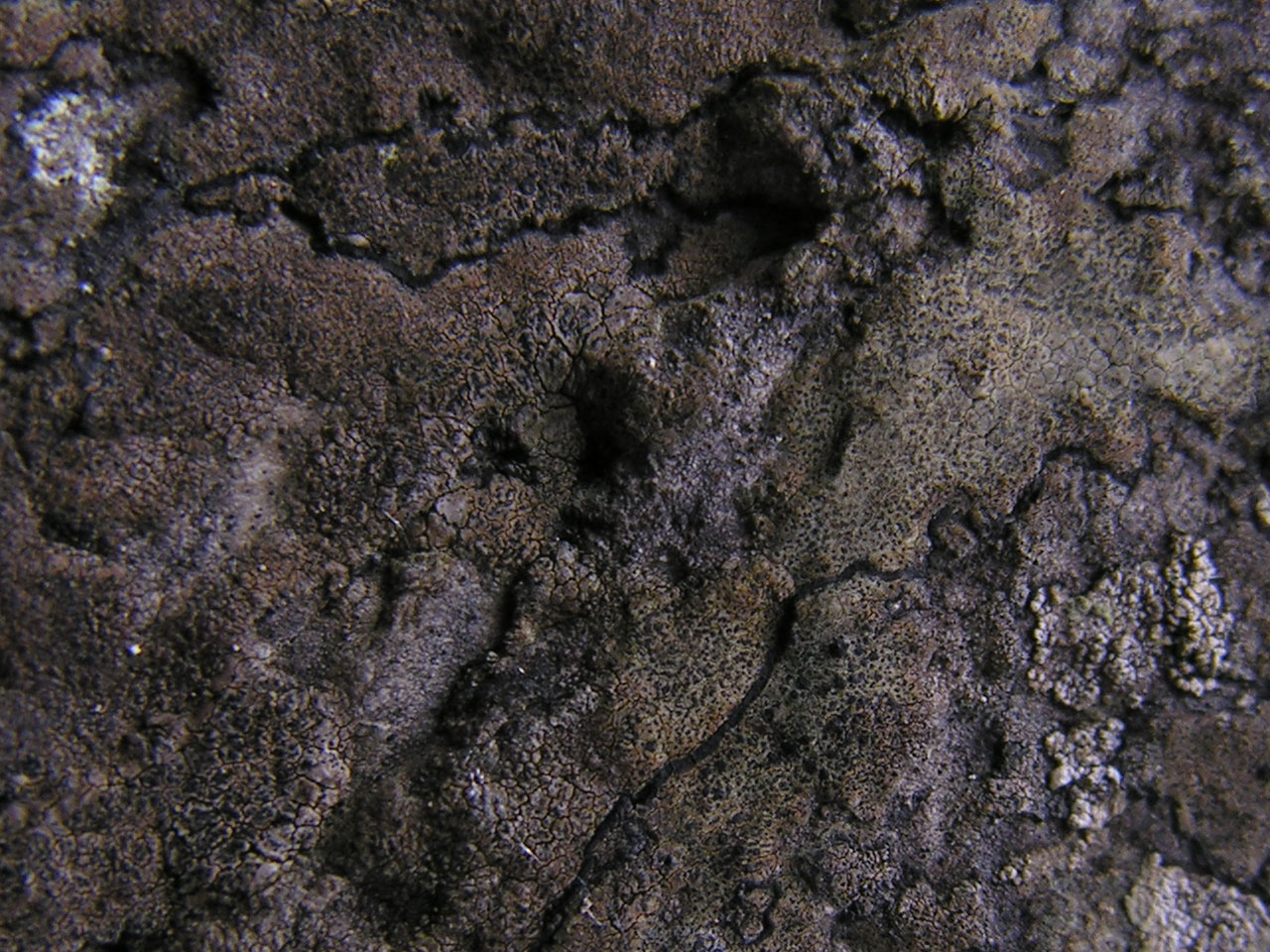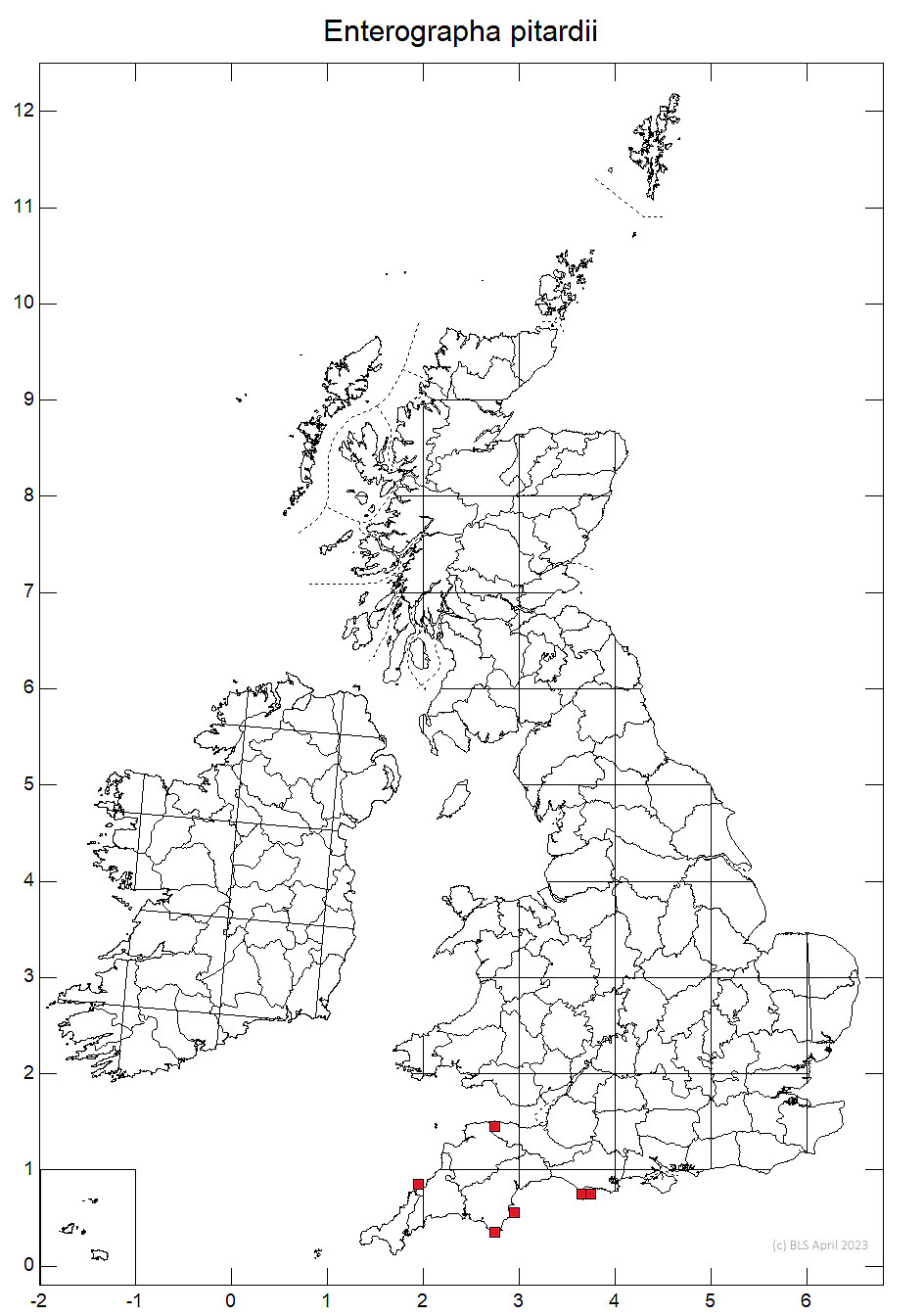Enterographa pitardii
A rare southern Atlantic and Mediterranean species similar to Enterographa crassa or E. hutchinsiae, but lacks the forked apothecia of the latter and has an areolate thallus compared to the smooth thallus of E. crassa. It is also found in a distinct habitat; dry overhung rocks on coastal slopes which are more exposed and drier than the typical habitats of the other species.
Thallus moderately thick, continuous, strongly rimose-areolate, even to warted, lead-grey to dark brownish grey; prothallus thin, black. Apothecia dark brown to black, immersed, punctiform to elliptical in surface view, 0.1–0.2 × 0.07–0.1 mm, regularly dispersed across the thallus; epithecium orange-brown; paraphyses 1–1.5 μm diam. Asci 8-spored. Ascospores 27–35 × 3–5 μm, 5- to 6-septate. Pycnidia black, punctiform; conidia 6–8 × 0.8–1 μm. Thallus C–, K–, K/UV+ mauve, Pd–, UV– (confluentic acid)
On vertical or overhanging dry siliceous coastal acid rocks (including chert in limestone, rarely on associated limestone) within the Sclerophytetum circumscriptae community, in more exposed and drier sites than E. crassa or E. hutchinsiae.

Very rare. S.W. coast from Dorset (Portland) to N. Devon (Valley of the Rocks), with records from south Devon and north Cornwall. Some old records of E. crassa from coastal rocks may also be referable here.
At the original site on the Isle of Portland, Dorset, the boulders here have been threaten by over growth from Ivy, but conservation has been undertaken. Other sites may also be threatened by over growth due to the decline of coastal slope grazing.
Britain: Near Threatened
Cannon, P., Aptroot, A., Coppins, B., Ertz, D., Sanderson, N., Simkin, J. & Wolseley, P. (2021). Arthoniales: Roccellaceae, including the genera Cresponea, Dendrographa, Dirina, Enterographa, Gyrographa, Lecanactis, Pseudoschismatomma, Psoronactis, Roccella, Schismatomma and Syncesia. Revisions of British and Irish Lichens 16: 1-22.
Text by Neil A. Sanderson based on Cannon et al (2021)



